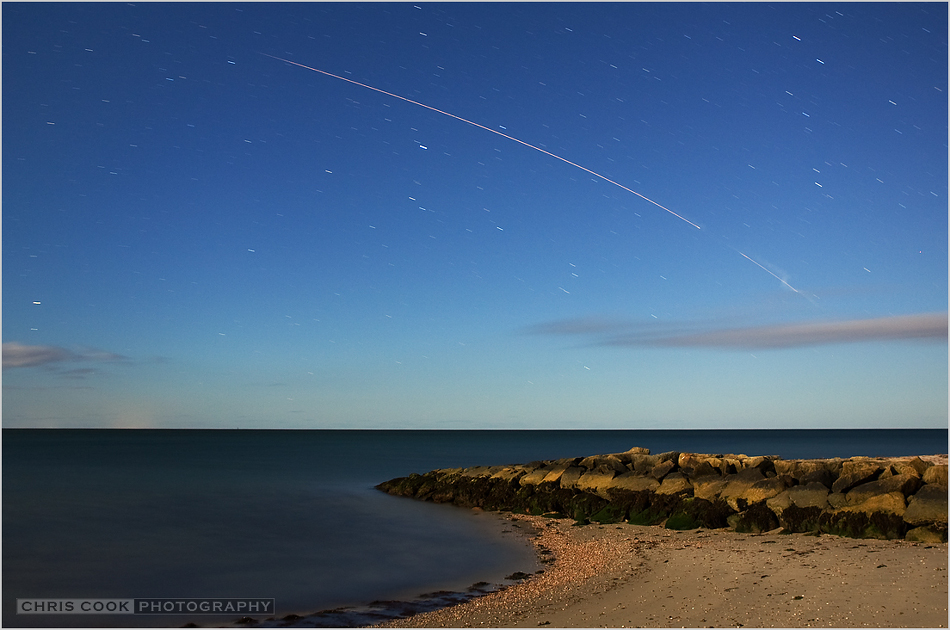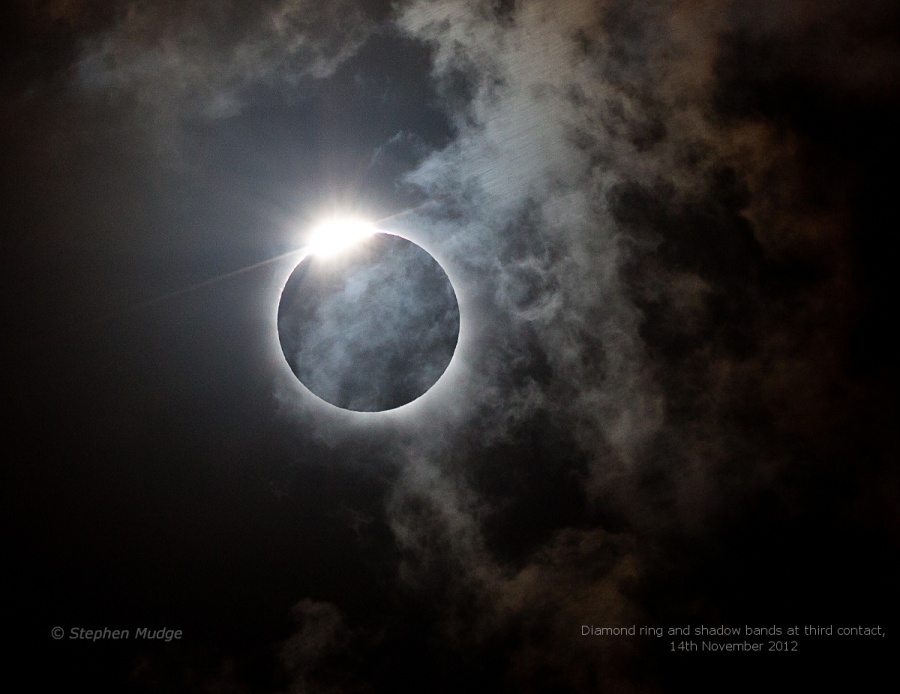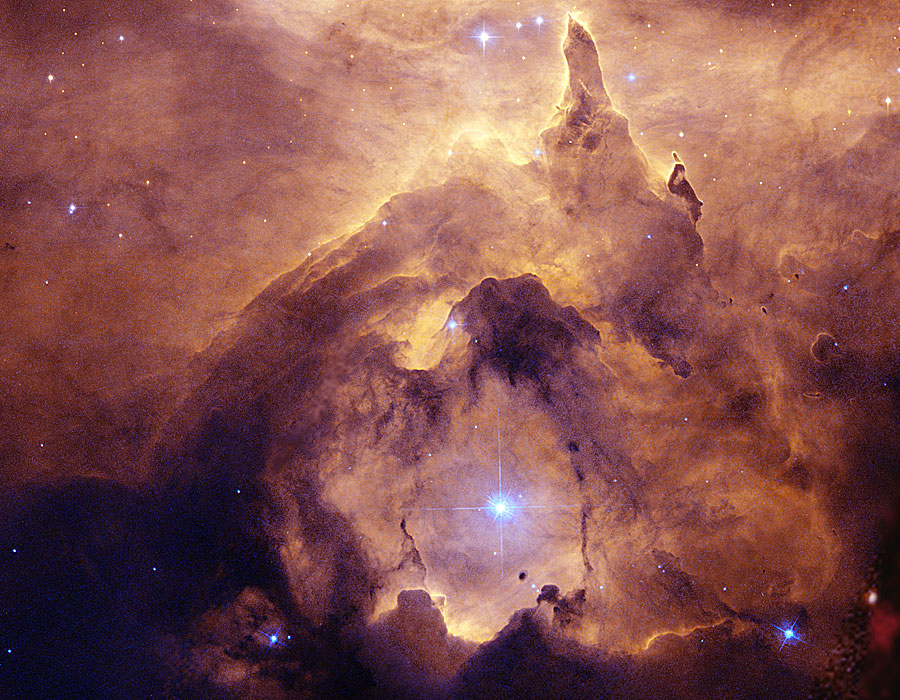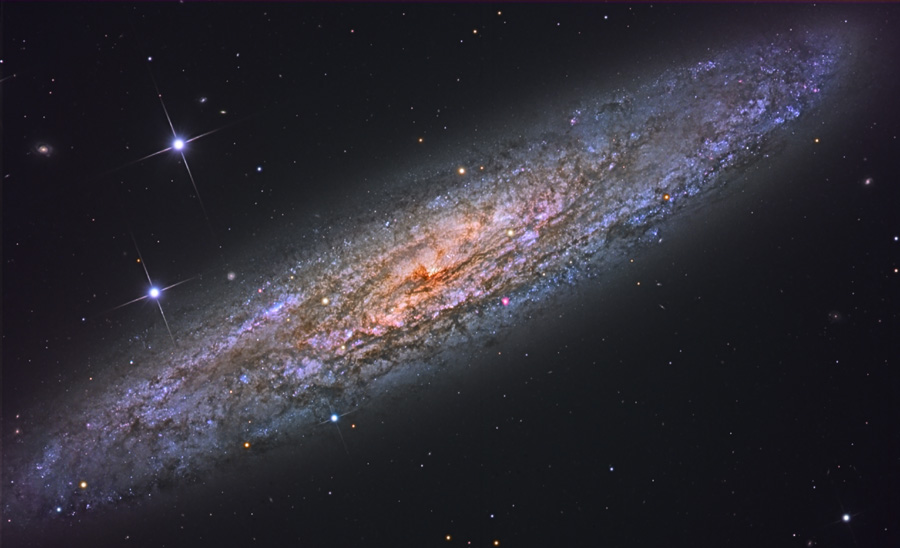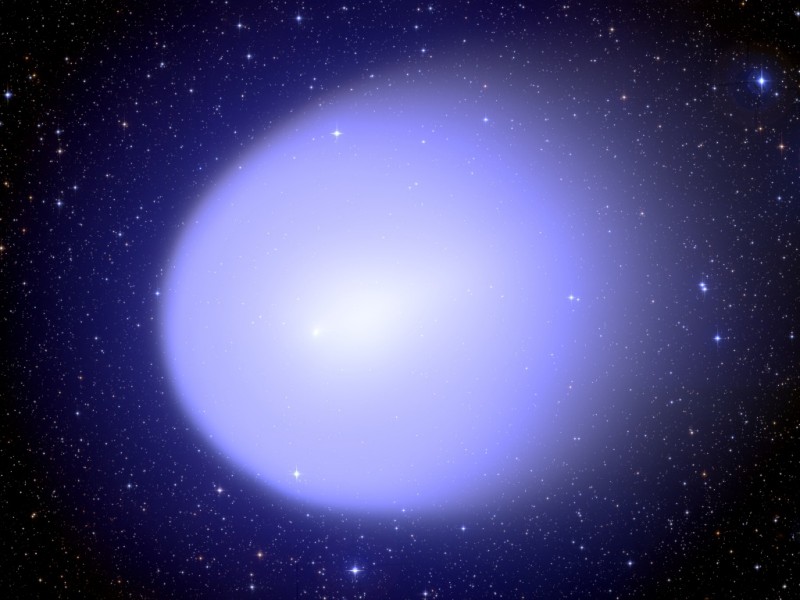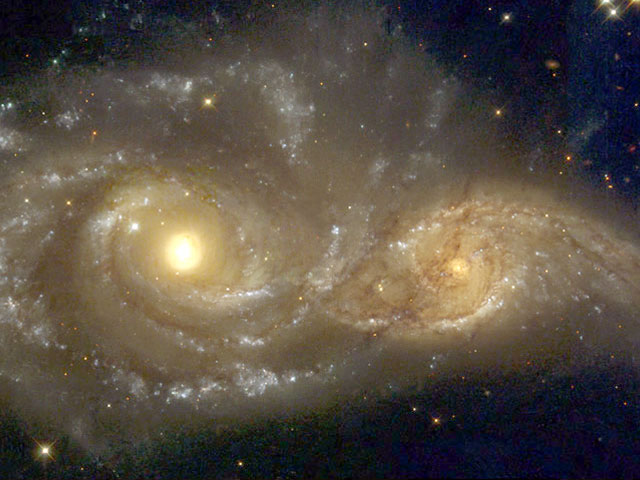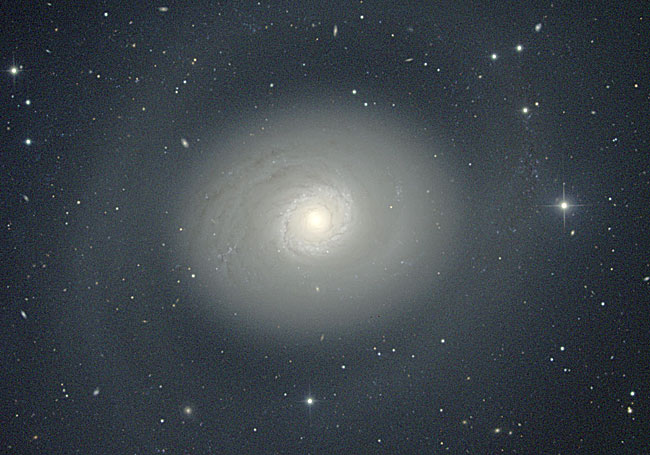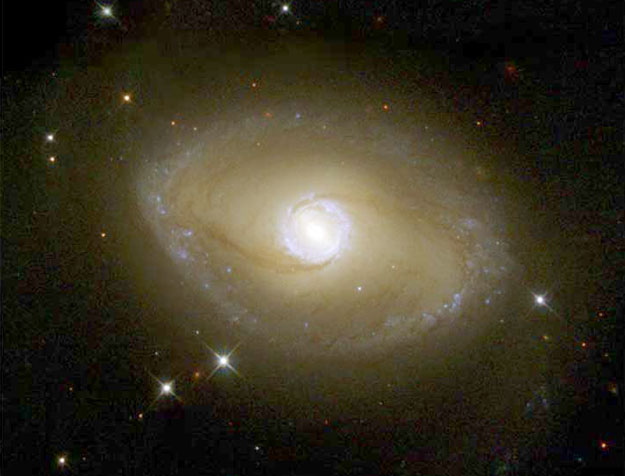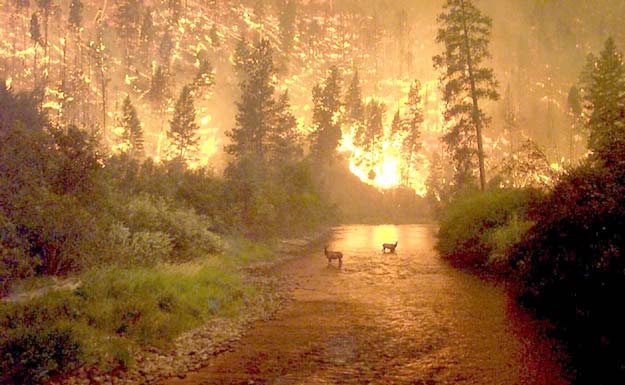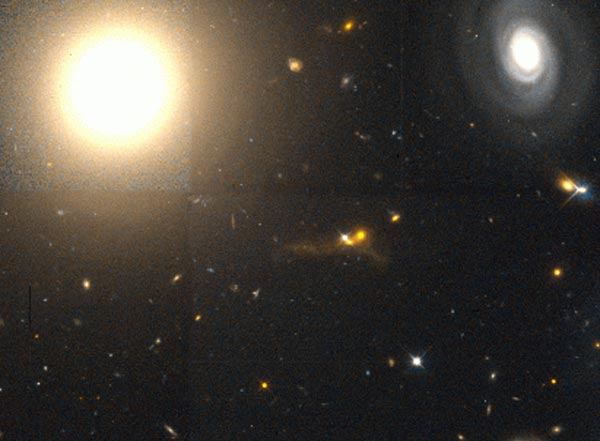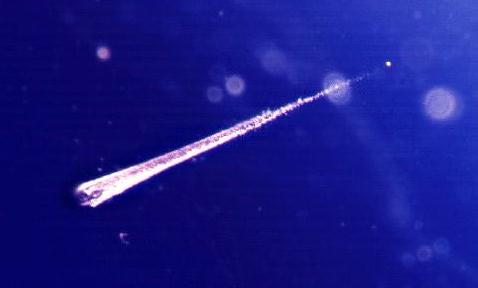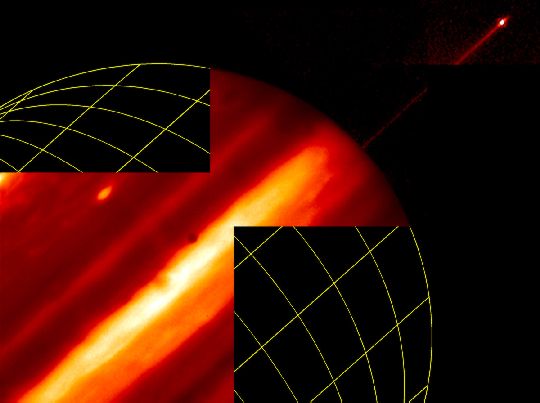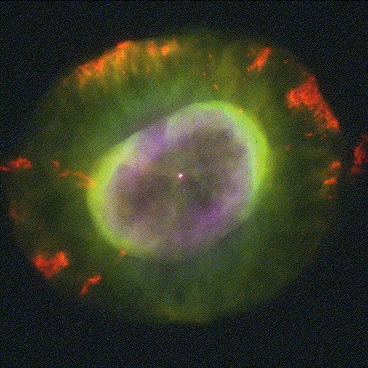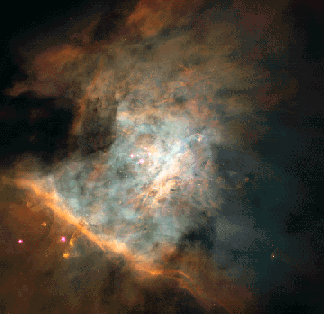| << Previous | Index | Next >> |
2014 The Crab Nebula is cataloged as M1, the first object on Charles Messier's famous 18th century list of things which are not comets. In fact, the Crab is now known to be a supernova remnant, debris from the death explosion of a massive star, witnessed by astronomers in the year 1054. This sharp, ground-based telescopic view uses narrowband data to track emission from ionized oxygen and hydrogen atoms (in blue and red) and explore the tangled filaments within the still expanding cloud. One of the most exotic objects known to modern astronomers, the Crab Pulsar, a neutron star spinning 30 times a second, is visible as a bright spot near the nebula's center. Like a cosmic dynamo, this collapsed remnant of the stellar core powers the Crab's emission across the electromagnetic spectrum. Spanning about 12 light-years, the Crab Nebula is a mere 6,500 light-years away in the constellation Taurus.
2013 Star trails arc above a moonlit beach and jetty in this serene sea and night skyscape. Captured on November 19, the single time exposure looks south down the Atlantic coast from Cape Cod, Massachusetts, USA. But the longest and brightest trail is a Minotaur 1 rocket, a stage separation and exhaust plume visible along the rocket's fiery path toward low Earth orbit. The multi-stage Minotaur was launched from the Mid-Atlantic Regional Spaceport at NASA's Wallops Flight Facility at 8:15 p.m Eastern Time in Virginia, about 400 miles away. On board were a remarkable 29 satellites destined for low Earth orbit, including a small cubesat built by high school students, and Firefly.
2012 As the total phase of last week's solar eclipse came to an end, sunlight streaming past the edge of the Moon created the fleeting appearance of a glistening diamond ring in the sky. And while most eclipse watchers did not consider clouds a welcome sight, a view through thin clouds north of Cairns in Queensland, Australia also revealed these remarkable flickering shadow bands. Projected onto the cloud layer, the bands are parallel to the sliver of emerging sunlight. Caused by turbulence in Earth's atmosphere refracting the sliver of sunlight, the narrow bands were captured in this brief, 1/1000th second exposure.
2011
Video Credit: Expedition 28 & 29 Crews, ISAL, NASA's JSC;
Compilation and Editing: Michael König; Music: Do Dekor (Jan Jelinek), faitiche
Compilation and Editing: Michael König; Music: Do Dekor (Jan Jelinek), faitiche
2010 For reasons unknown, NGC 6357 is forming some of the most massive stars ever discovered. One such massive star, near the center of NGC 6357, is framed above carving out its own interstellar castle with its energetic light from surrounding gas and dust. In the greater nebula, the intricate patterns are caused by complex interactions between interstellar winds, radiation pressures, magnetic fields, and gravity. The overall glow of the nebula results from the emission of light from ionized hydrogen gas. Near the more obvious Cat's Paw nebula, NGC 6357 houses the open star cluster Pismis 24, home to many of these tremendously bright and blue stars. The central part of NGC 6357 shown spans about 10 light years and lies about 8,000 light years away toward the constellation of the Scorpion.
2009
2008 Also known by the popular name the "Little Dumbbell Nebula", M76 is one of the fainter objects listed in Charles Messier's 18th century Catalog of Nebulae and Star Clusters. Like its better-known namesake M27 (the Dumbbell Nebula), M76 is recognized as a planetary nebula - a gaseous shroud cast off by a dying sunlike star. The nebula itself is thought to be shaped more like a donut, its central box-like appearance due to our nearly edge-on view. Gas expanding more rapidly away from the donut hole produces the more extensive, far flung material in this remarkable image that uses narrow-band filters to highlight the emission from hydrogen (in red) and oxygen atoms (in greenish blue). In particular, complex oxygen emission features are seen above and below the main nebula to a degree not detected in most images of M76. Distance estimates place M76 about 3 to 5 thousand light-years away toward the heroic constellation Perseus, making the nebula over a light-year in diameter.
2007
2006 This past weekend, small remnant bits of a distant comet lit up the skies over much of planet Earth. Incoming reports, however, have this year's Leonid meteor shower as less active than Leonid meteor showers a few years ago. Nevertheless, some sky enthusiasts reported peak meteor bursts as high as one visual meteor per minute. The parent body of the Leonids meteor shower, Comet Tempel-Tuttle, leaves a trail of expelled sand-size particles every 33 years when it returns to the inner Solar System. When the Earth passes through a stream of these Sun-orbiting particles, a meteor shower results. Pictured above, a Leonid meteor was captured two days ago during the early morning hours of November 19 over Vallentuna, Sweden. Although activity levels in meteor showers are notoriously hard to predict, some astronomers speculate that Aurigids meteor shower next September might be unusually rich in bright meteors.
2005 Where are the craters on asteroid Itokawa? No one knows. The Japanese robot probe Hayabusa recently approached the Earth-crossing asteroid and is returning pictures showing a surface unlike any other Solar System body yet photographed -- a surface possibly devoid of craters. One possibility for the lack of common circular indentations is that asteroid Itokawa is a rubble pile -- a bunch of rocks and ice chunks only loosely held together by a small amount of gravity. If so, craters might be filled in whenever the asteroid gets jiggled by a passing planet -- Earth in this case. Alternatively, surface particles may become electrically charged by the Sun, levitate in the microgravity field, and move to fill in craters. Over the weekend, Hayabusa lowered itself to the surface of the strange asteroid in an effort to study the unusual body and collect surface samples that could be returned to Earth in 2007.
2004
2003 November's lunar eclipse was one of the shortest in recent years and also one of the brightest -- demonstrating that the Earth's shadow is not completely dark. The eclipsed Moon remained easily visible during totality, reflecting reddened light filtering on to its surface from all the sunsets and sunrises, as seen from the lunar perspective, around the edges of a silhouetted Earth. Hoping to view the celestial shadow play from the Earth's night side near Cologne, Germany, about 400,000 kilometers from the lunar surface, amateur astronomer Markus Strassfeld packed a digital camera and telescope and drove about 10 kilometers outside the city to escape the bright city lights. Fortunately, the sky cleared about an hour before the eclipse began and he was able to record this sharp image of sunsets illuminating the totally eclipsed Moon. Young ray crater Tycho, about 85 kilometers across, stands out near the Moon's brighter southern edge.
2002 What could cause the center of M94 to be so bright? Spiral galaxy M94 has a ring of newly formed stars surrounding its nucleus, giving it not only an unusual appearance but also a strong interior glow. A leading progenitor hypothesis holds that an elongated knot of stars known as a bar rotates in M94 and has generated a burst of star formation in the form of an outward moving ring. M94, pictured above digitally sharpened, spans about 30,000 light years, lies about 15 million light years away, and can be seen with a small telescope toward the constellation of Canes Venatici.
2001 Do spiral galaxies look the same in every color? NGC 6782 demonstrates colorfully that they do not. In visible light, NGC 6782 appears to be a normal spiral galaxy with a bright bar across its center. In ultraviolet light, however, the central region blossoms into a spectacular and complex structure highlighted by a circumnuclear ring, as shown in the above representative color Hubble Space Telescope image. Many of the young stars that formed in a recent burst of star formation emit the ultraviolet light. Astronomers are studying possible relationships between the central bar and the ring. Light we see today from NGC 6782 left about 180 million years ago, while dinosaurs roamed the Earth. The galaxy spans about 80,000 light-years and can be seen with a telescope toward the constellation of Pavo.
2000 Sometimes, regions of planet Earth can be seen lit up with fire. Since fire is the rapid acquisition of oxygen, and since oxygen is a key indicator of life, fire on any planet would be an indicator of life on that planet. Most of the Earth's land has been scorched by fire at some time in the past. Although causing many a tragedy, fire is considered part of a natural ecosystem cycle. The year 2000 fire season in the continental United States has been one of the most active on record, burning an area similar in size to New Jersey. Large forest fires on Earth are usually caused by lightning and can be visible from orbit. Above, stunned Elk avoid a fire sweeping through Montana's Bitterroot Valley by standing in a river.
1999 Elliptical galaxies are unlike spiral galaxies and hence unlike our own Milky Way Galaxy. The giant elliptical galaxy named NGC 4881 on the upper left lies at the edge of the giant Coma Cluster of Galaxies. Elliptical galaxies are ellipsoidal in shape, contain no spiral arms, contain little interstellar gas or dust, and are found mostly in rich clusters of galaxies. Elliptical galaxies appear typically yellow-red, as opposed to spirals which have spiral arms that appear quite blue. Much speculation continues on how each type of galaxy can form, on whether ellipticals can evolve from colliding spirals, or spirals can be created from colliding ellipticals, or both. Besides the spiral galaxy on the right, all other images in this picture are of galaxies that lie well behind the Coma Cluster.
1998 This carrot shaped track is actually little more than 5 hundredths of an inch long. It is the trail of a meteroid through the high-tech substance aerogel exposed to space by the shuttle launched EURECA (European Recoverable Carrier) spacecraft. The meteoroid itself, about a thousandth of an inch in diameter, is visible where it came to rest, just beyond the tip of the carrot (far right). Chemical analyses of interplanetary dust particles similar to this one suggest that some of them may be bits of comets and represent samples of material from the early stages of the formation of the Solar System.
1997 An inner moon, an edge-on, planet-girdling ring, and high altitude cloud bands are visible in this mosaic of infrared images of gas giant Jupiter. The moon Metis, 25 miles wide and about 80,000 miles from the planet, is the bright spot at the upper right. Metis lies within Jupiter's faint, tenuous ring, and may be a source of ring material. Recorded on September 17th by the NICMOS instrument on board the Hubble Space Telescope, these pictures also emphasize atmospheric features high above the main jovian cloud deck. Methane gas in Jupiter's atmosphere absorbs the near infrared light causing deeper clouds to appear dark at these wavelengths. Clouds riding above most of the atmospheric methane are bright. The circular dark spot just above the brightest cloud band is an image artifact.
1996 Will the Sun one day look like - a blue snowball? Maybe! The Blue Snowball is a planetary nebula - and in 5 billion years the Sun will throw off its outer layers and go through a planetary nebula phase. A star can appear "normal" only so long as there are sufficient nuclear reactions in its core. Soon thereafter, gravity will win out and compress the stellar core to higher temperatures. Eventually the core becomes a white dwarf. These high temperatures somehow cause the expulsion of star's outer layers, creating a planetary nebula such as the Blue Snowball pictured above. Although the Blue Snowball, also known as NGC 7662, does appear blue, the above picture's colors are not real and were chosen to highlight the emission of certain ions in the nebula. Many things are still not known about planetary nebula, including details of the physical mechanism that creates the nebula, and the reason for fast knots of gas in the outer regions known as fliers.
1995 The Great Nebula in Orion is one of the most interesting of all astronomical nebulae known. Here fifteen pictures from the Hubble Space Telescope have been merged to show the great expanse and diverse nature of the nebula. In addition to housing a bright open cluster of stars known as the Trapezium, the Orion Nebula contains many stellar nurseries. These nurseries contain hydrogen gas, hot young stars, proplyds, and stellar jets spewing material at high speeds. Much of the filamentary structure visible in this image are actually shock waves - fronts where fast moving material encounters slow moving gas. Some shock waves are visible near one of the bright stars in the lower left of the picture. The Orion Nebula is located in the same spiral arm of our Galaxy as is our Sun. It takes light about 1500 years to reach us from there.
| << Previous | Index | Next >> |

